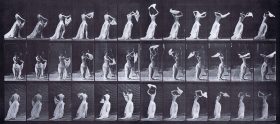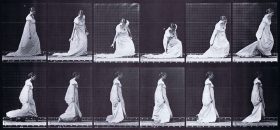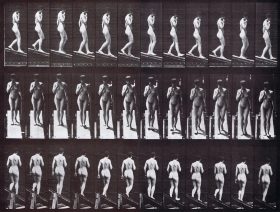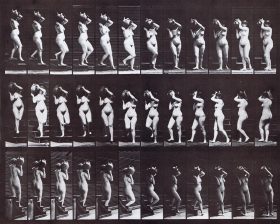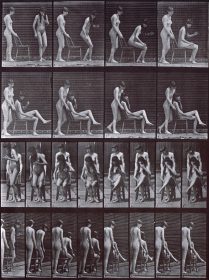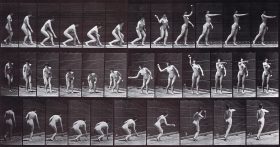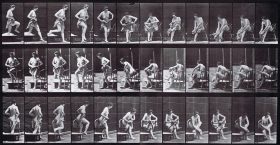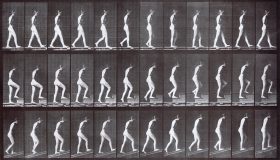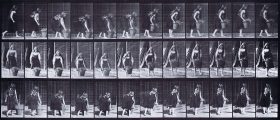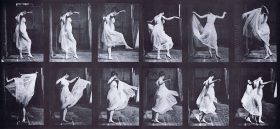Artworks by Muybridge, Eadweard
![Em 465 08]()
Females (semi-nude) & Children. Plate 421. Toilet, throwing handkerchief around shoulders.
![Em 465 10]()
Females & Males (draped). Plate 207. Stooping and lifting train.
![Em 465 01]()
Females. Plate 116. Descending an incline with one hand on chin.
![Em 465 02]()
Females. Plate 147. Descending stairs and turning with a water jar on right shoulder.
![Em 465 05]()
Females. Plate 239. One woman standing, another sitting and crossing legs.
![Em 465 04]()
Females. Plate 303. Picking up a ball and throwing it.
![Em 465 06]()
Females. Plate 410. Stepping out of a bathtub, sitting and wiping feet.
![Em 465 09]()
Females. Plate 482. A: Walking, B: Ascending stairs, C: Ascending an incline.
![Em 465 07]()
Males & Females. Plate 217. Stooping, lifting and carrying a 30-lb basket.
![Em 465 03]()
Movements. Female. Plate 188. Dancing (fancy).
![Em-2502]()
Panorama of San Francisco from California St. Hill
